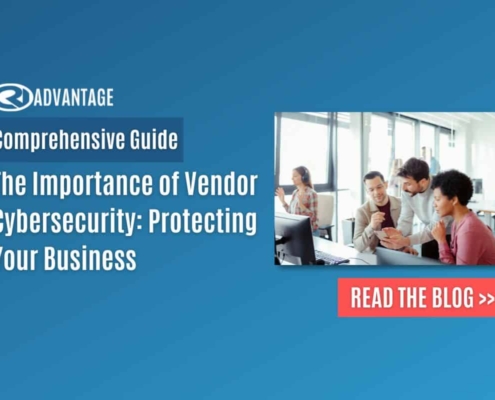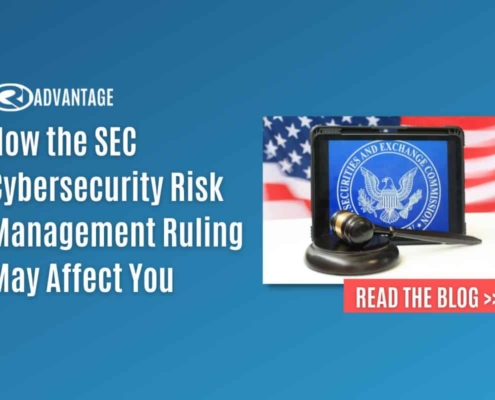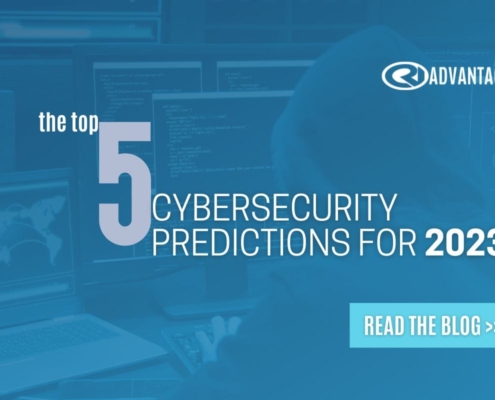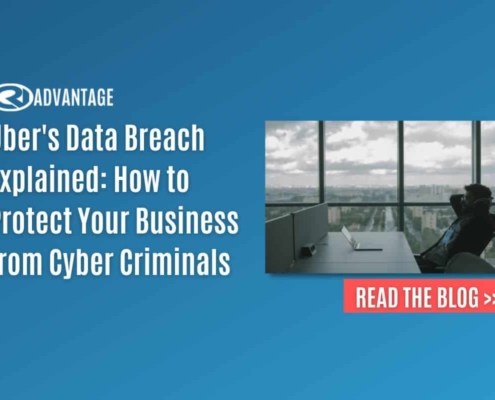 https://criadvantage.com/wp-content/uploads/2025/04/Smiling-male-employees-discussing-cooperation-planning.jpg
1250
2000
Abstrakt Marketing
/wp-content/uploads/2024/11/CRI-Logo-Transparent.-blue.png
Abstrakt Marketing2025-04-04 09:19:322025-07-05 09:00:52How ServiceNow Supports Scalable IT Solutions for Growing Businesses
https://criadvantage.com/wp-content/uploads/2025/04/Smiling-male-employees-discussing-cooperation-planning.jpg
1250
2000
Abstrakt Marketing
/wp-content/uploads/2024/11/CRI-Logo-Transparent.-blue.png
Abstrakt Marketing2025-04-04 09:19:322025-07-05 09:00:52How ServiceNow Supports Scalable IT Solutions for Growing BusinessesIt seems like every week in the news, there’s some new threat or incident involving data security.
This time it’s the U.S. Customs and Border Patrol (CBP). Well, a subcontractor of theirs anyway. CBP just announced that one of its subcontractors suffered a cyber breach. Unauthorized data access is typical in a breach, and this is no exception. CBP acknowledged there was unauthorized access to license plate images and public traveler images in the subcontractor’s possession. What makes this incident different is that in addition to the main breach, the subcontractor was not authorized to have this data on its network. The data shouldn’t have been there to begin with.
This latest CBP breach is another illustration of a common characteristic which many breaches share. Breaches often don’t originate within the main corporate (data owner) network. They start with weaker partner organizations first and then spread from there to various degrees.
No longer can you think of data as being something which is created and stays in a defined place. Data and metadata get created and often travel to many destinations as they are processed and used. Securing data requires that you understand the lifecycle of the data you are responsible for, where it goes and how it is used, and what controls are in place to protect it. How do you go about doing this?
Share This Post
More Like This
 https://criadvantage.com/wp-content/uploads/2025/04/Smiling-male-employees-discussing-cooperation-planning.jpg
1250
2000
Abstrakt Marketing
/wp-content/uploads/2024/11/CRI-Logo-Transparent.-blue.png
Abstrakt Marketing2025-04-04 09:19:322025-07-05 09:00:52How ServiceNow Supports Scalable IT Solutions for Growing Businesses
https://criadvantage.com/wp-content/uploads/2025/04/Smiling-male-employees-discussing-cooperation-planning.jpg
1250
2000
Abstrakt Marketing
/wp-content/uploads/2024/11/CRI-Logo-Transparent.-blue.png
Abstrakt Marketing2025-04-04 09:19:322025-07-05 09:00:52How ServiceNow Supports Scalable IT Solutions for Growing Businesses
CRI Advantage Honored as ServiceNow’s Consulting and Implementation Partner of the Year – Premier Segment, Americas Region
CRI, Press Releases
CRI Advantage Achieves Recertification for ISO 27001:2022, ISO 9001:2015, and ISO 20000-1:2018
CRI, Press Releases https://criadvantage.com/wp-content/uploads/2024/12/Blog-Format-7-1-1.jpg
800
1200
Nate Riggins
/wp-content/uploads/2024/11/CRI-Logo-Transparent.-blue.png
Nate Riggins2023-09-28 16:31:542025-07-05 09:00:56Cybersecurity Implications for Executives and Boards
https://criadvantage.com/wp-content/uploads/2024/12/Blog-Format-7-1-1.jpg
800
1200
Nate Riggins
/wp-content/uploads/2024/11/CRI-Logo-Transparent.-blue.png
Nate Riggins2023-09-28 16:31:542025-07-05 09:00:56Cybersecurity Implications for Executives and Boards https://criadvantage.com/wp-content/uploads/2024/12/Blog-Format-5-1-1.jpg
800
1200
Nate Riggins
/wp-content/uploads/2024/11/CRI-Logo-Transparent.-blue.png
Nate Riggins2023-06-13 22:20:172025-07-05 09:00:56The Importance of Vendor Cybersecurity: Protecting Your Business
https://criadvantage.com/wp-content/uploads/2024/12/Blog-Format-5-1-1.jpg
800
1200
Nate Riggins
/wp-content/uploads/2024/11/CRI-Logo-Transparent.-blue.png
Nate Riggins2023-06-13 22:20:172025-07-05 09:00:56The Importance of Vendor Cybersecurity: Protecting Your Business https://criadvantage.com/wp-content/uploads/2024/12/Blog-Format-11.jpg
800
1200
Nate Riggins
/wp-content/uploads/2024/11/CRI-Logo-Transparent.-blue.png
Nate Riggins2023-03-17 05:26:112025-01-09 13:12:47How the SEC Cybersecurity Risk Management Ruling May Affect You
https://criadvantage.com/wp-content/uploads/2024/12/Blog-Format-11.jpg
800
1200
Nate Riggins
/wp-content/uploads/2024/11/CRI-Logo-Transparent.-blue.png
Nate Riggins2023-03-17 05:26:112025-01-09 13:12:47How the SEC Cybersecurity Risk Management Ruling May Affect You  https://criadvantage.com/wp-content/uploads/2024/12/BLOG-PRESS-RELEASE-COVERS-9.jpg
800
1200
Nate Riggins
/wp-content/uploads/2024/11/CRI-Logo-Transparent.-blue.png
Nate Riggins2023-02-10 23:40:382025-01-09 13:14:23Getting Started With a Managed Security Operations Center
https://criadvantage.com/wp-content/uploads/2024/12/BLOG-PRESS-RELEASE-COVERS-9.jpg
800
1200
Nate Riggins
/wp-content/uploads/2024/11/CRI-Logo-Transparent.-blue.png
Nate Riggins2023-02-10 23:40:382025-01-09 13:14:23Getting Started With a Managed Security Operations Center  https://criadvantage.com/wp-content/uploads/2024/12/Blog-Format-9-1.jpg
800
1200
Nate Riggins
/wp-content/uploads/2024/11/CRI-Logo-Transparent.-blue.png
Nate Riggins2022-10-07 21:47:552025-01-09 13:16:59Top 5 Cybersecurity Predictions for 2023
https://criadvantage.com/wp-content/uploads/2024/12/Blog-Format-9-1.jpg
800
1200
Nate Riggins
/wp-content/uploads/2024/11/CRI-Logo-Transparent.-blue.png
Nate Riggins2022-10-07 21:47:552025-01-09 13:16:59Top 5 Cybersecurity Predictions for 2023 https://criadvantage.com/wp-content/uploads/2024/12/BLOG-PRESS-RELEASE-COVERS-5.jpg
800
1200
Nate Riggins
/wp-content/uploads/2024/11/CRI-Logo-Transparent.-blue.png
Nate Riggins2022-09-19 05:51:052025-01-09 13:19:56Uber Data Breach Explained
https://criadvantage.com/wp-content/uploads/2024/12/BLOG-PRESS-RELEASE-COVERS-5.jpg
800
1200
Nate Riggins
/wp-content/uploads/2024/11/CRI-Logo-Transparent.-blue.png
Nate Riggins2022-09-19 05:51:052025-01-09 13:19:56Uber Data Breach Explained 
ServiceNow IT solutions tailored to your industry-specific needs.



